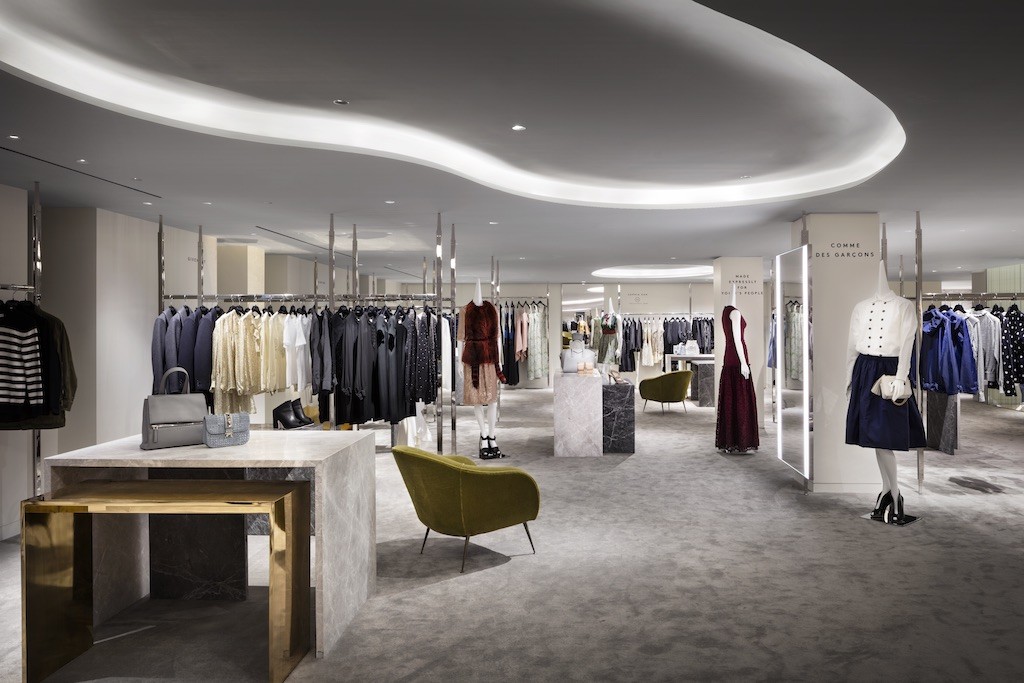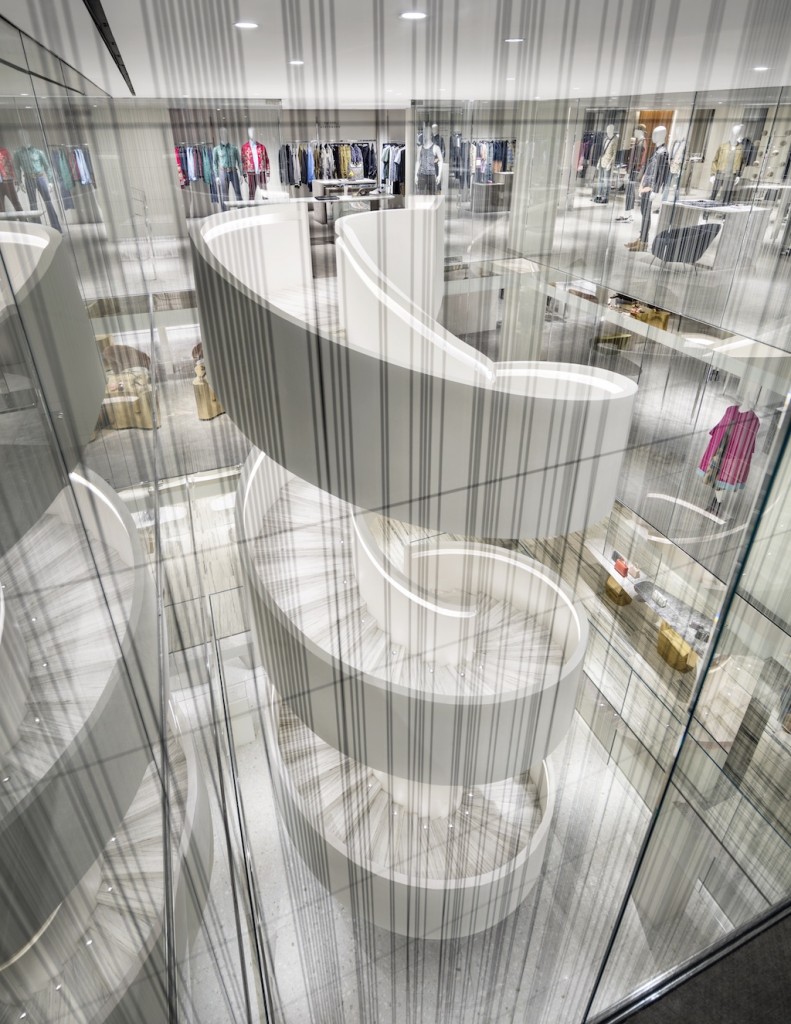Barneys New York Business Overview




The current climate of the luxury market is in constant change but is becoming more profitable by the year with the help of social media, influencers, as well as the growing men's sector of the fashion industry. According to McKinsey & Company, who is behind the annual Business of Fashion analytics reports, the luxury fashion industry has grown on an average of 5.5% per year making up a 2.4 trillion dollar industry making it the 7th largest industry in the world. With that being said, it is a good industry to be involved in currently, but this also offers challenges in terms of competition, especially with the growth of online sales channels. Barneys New York is one of the most recognizable luxury retailers in the world with 27 stores throughout the United States as well as a thriving online business that sells globally. Since the appointment of CEO Mark Lee in 2010 and now with current CEO Daniella Vitale, Barneys has climbed out of a $600 million Dollar debt and turned into a profitable company which brings in an estimated annual gross revenue of roughly $900 Million a year. According to Barney’s Business of Fashion company profile, their strategy has been focused on downsizing stores keeping Barney's location exclusively to Urban & sophisticated markets while letting their growing online business take care of cleaning up inventory that doesn't sell within their brick and mortar locations. One of the biggest issues that Barneys was and is currently facing is the rampant industry-wide practice of discounting items in order to boost sales. While it has become a popular way to drive sales, Barneys has shifted into carrying less of “everything” that relies on markdowns to make sales but they are shifting their focus to more special and limited clothing options at a varying price points. In my personal experience working in luxury sales, I believe the more mid-level luxury price point brands offer more accessibility to a mass audience, especially among the younger fashion minded demographic. This is the trend a lot of brands are following in order to reach more millennials who want to participate in fashion without having mass sums of money to spend on clothing. Barneys and the industry as a whole have shifted their focus to this market in order to drive sales and not feel the urge to discount items because the mid-level price point offers a higher percentage of sales due to its accessibility. This is also due to how fashion is consumed. With the growing use of social media and influencers, the fashion industry has really capitalized on the use of marketing products as well as using it to drive trends in order to convert it into business. The seamless transactions of online markets mixed with social media influence and marketing it has streamlined the entire way people purchase luxury goods.
As aforementioned, Barneys has focused on limiting their locations to only be in urban and sophisticated markets such as New York, LA, Las Vegas, and Boston. This allows them to focus on their locations as well as keep them exclusive to certain cities where the market has the buying powers to afford their products. In addition to limiting their physical presence, Barneys has spent significant amounts on creating digital content including an online editorial blog feature entitled “The Window,” which highlights relevant designers and products, which helps with web SEO as well as adding value to their online customers. The online editorial has been so successful with their viewers they launched a print version back in 2015, which also helps drive business and creates original content for the company to use for as marketing assets. According to The Business of Fashion, Barneys customers on average spend $700 per transaction on their website Barneys.com. The investment has seemed to pay off really well considering the company had a debt of $600 million just 8 years ago.



Barneys is owned by parent company Perry Capitol which is a hedge fund that acquired Barneys in 2012 (Bloomberg). This helped reduced Barney’s $600 million dollar debt to $50 million upon Perry Capitol’s acquirement. The Barneys brand portfolio includes Barneys New York flagships, Barneys Warehouse stores, Freds at Barney's restaurants, as well as The Barneys New York store brand.
Barneys faces numerous competitors within the luxury fashion market. Names such as Bergdorf Goodman, Saks 5th Avenue, Bloomingdales, Neiman Marcus, Nordstroms, as well as online luxury retailers such as SSENSE, Farfetch, and Net-a-Porter/ Mr.Porter. For the most part, each of these retailers are about the same in size and carry the exact same brands give or take a few, so it takes a little more than just having the hot items, they have to be marketed and available first, or offer store exclusives in order to drive sales away from their competitors. While Barneys has a lot of competitors they have other elements that have helped set them apart such as Fred's Restaurants in stores that offers more of a lifestyle appeal, as well as their more recent marketing push initiative entitled “The Drop,” which they launched in Fall 2017, which consists of designer collaborations, store exclusives, interactive designer panels, as well as other unique in-store experiences. By having a large in-store exclusive drop with designers present, Barneys has been able to attract crowds to “The Drop,” generate revenue, add customer value, and create press opportunities all of which differentiates them from their competitors. In addition, Barneys also offers a chance for their customers to pre-order new season goods far in advance, which helps guarantee clients their products before other stores get them in-stock. The pre-order system also cuts down on buyers budgets and combats off one of the most crippling aspects of the retail business which is leftover inventory. I am sure they aren't the only retailer that offers pre-orders, however, they are the only one that comes to mind when it comes to that business decision, which also means they have marketed it effectively to their customers.








The Drop Images via Highsnobiety
Barney's target audience consists of affluent men and women with high buying powers who find value in the brands and services that they offer. This market consists of Chinese customers, celebrities, professional athletes, musicians, and other demographics that have extreme buying power. I would say this is consistent among the industry as a whole considering only a small percentage is able to afford to shop at luxury retailers. The Chinese market has really helped push the luxury fashion business considering they have one of the top buying powers as a demographic in the world (McKinsey & Company). Barneys describes themselves as “a modern luxury specialty store.” They shy away from the word “department store,” which I believe to be a good decision just on the sheer fact that customer trends are more focused on curation and personalization, which a typical department store lacks because of the large number of products in their stores. Barneys is trying to reposition themselves as less of a department store and more of a “specialty store,” that is focused on curation and store exclusives. While I will say that they are doing some good things to reposition themselves, their biggest challenge is the size of their stores as well as the number of employees they have. It is easy for it to become less of a curated personal experience and more of that department store feel. I would say that Barneys is doing a better job of combating the “department store” blues than its competitors because they do events and more customer value initiatives such as “The Drop.” Barneys has made great use of technology in how they conduct business. As aforementioned, barneys.com offers digital content, pre-orders, and access to the latest in stock items. In addition to their webstore, they produce original content on their online and print magazine entitled “The Window,” which helps generate advertising revenue and original content for marketing purposes. Their social media team has made use of technology by working with influencers & designers to add value and market new products. They currently have 1.5 Million followers on Instagram and 465k on twitter. Their use of social media, their online editorial and website have helped them market new products, reach a younger demographic and other target markets, and drive online and in-store sales. Barneys has not expanded their physical presence outside of the United States, but their online store sells to a global audience. Barney's pricing strategy consists of higher prices to target their affluent target market, but also offers a range of mid-level priced goods in order to reach other particular audiences. Barneys has stopped doing sales because the practice of continually discounting items was cutting into their margins. With that in considering Barneys crossed out their bi-annual sample sale, and have turned their focus on curating more limited, rare, and exclusive pieces in order to have a higher rate of sale through instead of being a store that has everything but is always on sale in order to move inventory. While this strategy has been working effectively in repairing their brand image and tailoring to the current customer needs of curation, I believe Barneys still faces some of the challenges as being perceived as just a “department store.” By doing more “Drop” type events, I believe Barney's can transform their corporate entity into more of a community-focused store that works with designers and engages more in-depth with its customers.
Barneys has a lot of strengths as a retailer that helps them stand apart from their competition. Some of these include, their relationships with the designers they carry, the print and online editorial content via “The Window,” the Barneys name and branding itself carries a lot of weight, having Fred’s restaurants inside some of their flagships helps add value to their stores and gives them a lifestyle entity that is marketable and adds variety to their business. Some of their weaknesses come mostly from the trends that customers are headed towards. Customers are looking for a more personalized and curated shopping experience, which Barneys offers in a sense, but due to the sheer size and amount of products that they carry it can be overwhelming to shop there and is sometimes a hassle trying to find what you are looking for. Trying to fight that department store label has been a challenge that they are working to combat. Some of their challenges include fighting the constant customer needs, trends, and habits, so staying at the forefront of that has been good for Barneys, but some of that is out of their control, but luckily having barneys.com has helped them gain online customers versus just physical ones. Barneys has an abundance of opportunities especially with the resources they already obtain. By using their social media and digital assets Barneys has a lot of room for growth. Continuing to grow their digital presence as well as marketing activities such as “The Drop,” will help them gain traction and separate themselves from their competitors.
